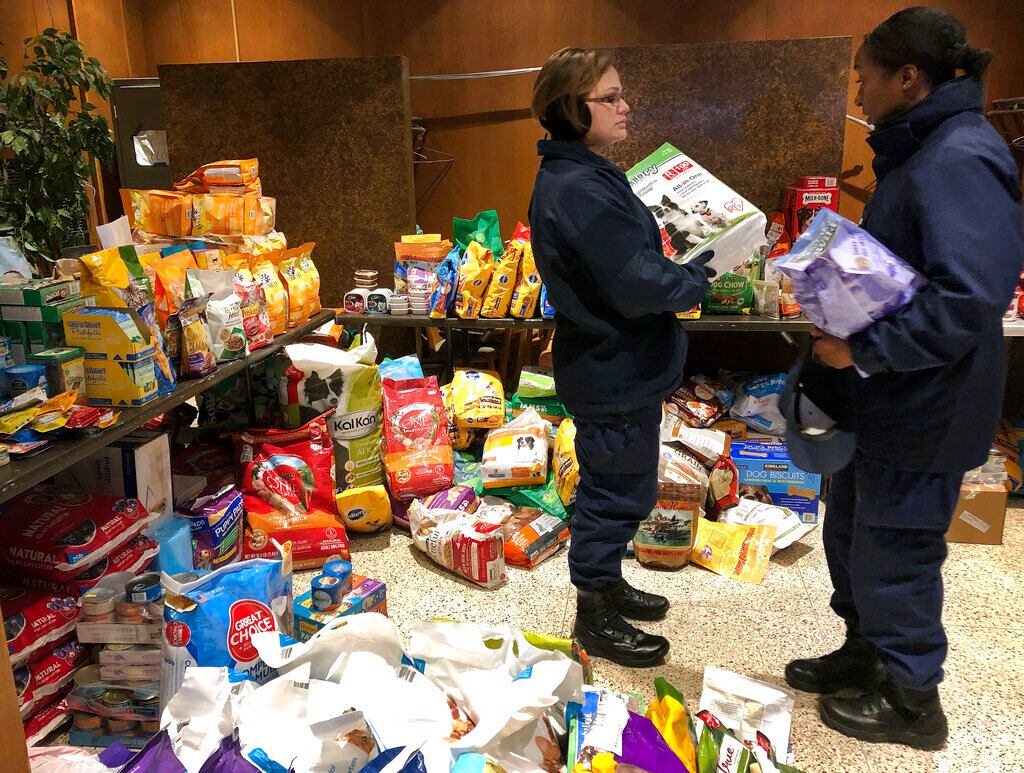AURORA, Colorado — The Air Force is cutting in half the number of tankers it planned to buy as an interim step, as part of a move to rethink its overall aerial refueling modernization strategy, the service’s acquisition chief said Monday.
The revamp of the Air Force’s strategy comes as the service is growing increasingly concerned about the likelihood it will face a dangerously contested airspace in a future war against an adversary like China. The approach is meant to ensure future tankers will be able to survive a war in which they are likely targeted.
As part of this strategic shift, the Air Force will halve the number of tankers it originally planned to buy in the next decade from roughly 150 to about 75, Andrew Hunter told reporters in a roundtable at the Air and Space Forces Association’s AFA Warfare Symposium here.
Hunter also said the requirements will be “more modest” than originally planned for the bridge tanker, which is the Air Force’s term for a planned tanker purchase meant to close a gap between buying its final Boeing-made KC-46 Pegasus and a next-generation tanker it originally referred to as KC-Z.
Originally, the Air Force plotted a three-stage modernization effort, with its phases dubbed KC-X, KC-Y and KC-Z, to replace the legacy KC-135 Stratotanker fleet. The KC-46 Pegasus was acquired to fill the KC-X stage, and the Air Force was mulling its next steps for the KC-Y, or bridge tanker, which would tide the service over until it procured KC-Z sometime in the 2040s.
Over the last year, the Air Force has been conducting a business case analysis on the KC-Y to decide whether to hold a competition to choose between Lockheed Martin’s LMXT tanker and the KC-46, or to forgo the competition and buy more modified KC-46s from Boeing. If the Air Force ended up buying more KC-46s, Hunter said, it would likely get those tankers in 2032; if Lockheed won, Hunter expected their tankers would come in 2034.
The Air Force originally thought its KC-Y requirements could be a tweaked version of the KC-X requirements, with additional capabilities, Hunter said.
But after recent reviews and analyses of what the service’s refueling needs might be, he added, the service decided its current strategy for tanker modernization leaves the aircraft too vulnerable to attack.
Hunter said the Air Force is now moving to a program called the next-generation aerial refueling system, or NGAS.
NGAS is “focused on ensuring that the tanker capabilities [in the] 2030s and beyond will be able to survive and operate in a much more contested environment than the tankers of the past, or the tankers that are in our current fleet,” he said.
Hunter said recent Air Force studies, performed as part of Air Force Secretary Frank Kendall’s operational imperatives, underscored the threats potential adversaries might pose to vital aircraft such as tankers.
“We have to have an approach that allows us to address those threats and still refuel the joint force, and allow it to engage in all of the critical operations that are required for high intensity conflict,” he told reporters.
In his keynote address at the conference Tuesday, Kendall said the Air Force must revise its approach to mobility aircraft, including tankers, to account for the threats of a future war.
“Our mobility fleet can no longer operate forward with relative impunity,” Kendall said. “The air threat is becoming much more severe, with increasing range. A particular concern is the survivability of our tankers, which will have to be farther forward to refuel fighters that operate within a few hundred miles of the threat.”
This will require a new design for a more survivable tanker, Kendall said — “one that is not a derivative of a commercial aircraft.” He added that a blended wing body design is one option.
The Air Force said in a January request for information for NGAS it planned to start conducting an analysis of alternatives for the program in October, and is soliciting ideas from the defense industry.
According to the RFI, the NGAS tanker must be able to operate in contested combat scenarios. The Air Force wanted ideas on how a tanker would refuel unmanned aerial systems, integrate with a joint air battle management network, and take off from or land at regional or improvised airfields.
Hunter said the analysis of alternatives will take a “clean sheet” approach that could design an entirely new plane. He said the service wants a competitive pool of vendors — both aircraft companies and mission system providers — to plan the way ahead.
Hunter noted the Air Force hopes to field the “initial increment” of NGAS in the mid- to late 2030s.
He said that, based on the information industry has already sent the Air Force, the service could still end up selecting a modified KC-46 as its interim step. But if the Air Force does end up buying another wave of KC-46s, Hunter said the cost is likely to go up — partly because the KC-46 ended up being more expensive than anticipated, and partly because of the increased capabilities.
The Air Force expects to contract for the last of 179 planned KC-46s in fiscal 2027, and receive them two years later, Hunter said, which would lead to a gap in tanker production under a KC-Y competition.
Hunter said the Air Force expects to wrap up its business case analysis on the path forward on its future tanker needs by the middle of 2023.
Hunter told Defense News on Tuesday he did not expect shifting strategies from KC-Y and Z to NGAS would lead to any significant losses.
“Anything we’ve done to date, we will be able to leverage going forward,” Hunter said.
Courtney Albon contributed to this report.
Stephen Losey is the air warfare reporter for Defense News. He previously covered leadership and personnel issues at Air Force Times, and the Pentagon, special operations and air warfare at Military.com. He has traveled to the Middle East to cover U.S. Air Force operations.










